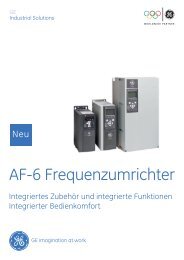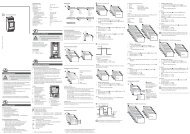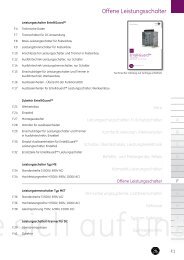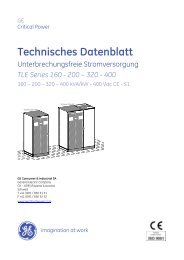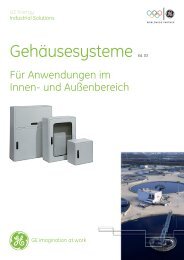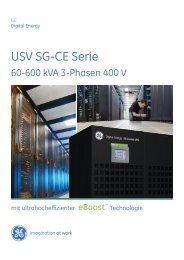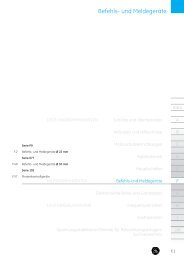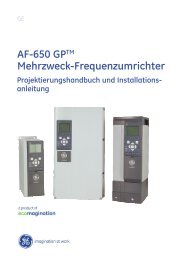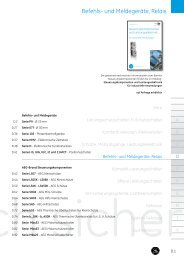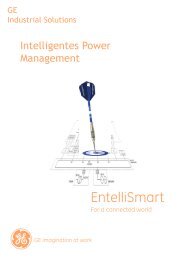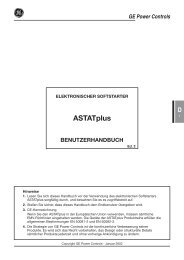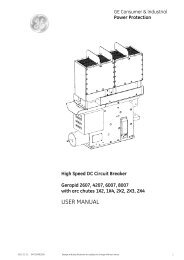Uninterruptible Power Supplies - G E Power Controls
Uninterruptible Power Supplies - G E Power Controls
Uninterruptible Power Supplies - G E Power Controls
You also want an ePaper? Increase the reach of your titles
YUMPU automatically turns print PDFs into web optimized ePapers that Google loves.
UPS<br />
RPA - a comparative overview<br />
Multiple UPS are configured in a system to support an increase in load capacity and/or to improve reliability. There are several<br />
configurations that include multiple UPS. These configurations all share a common shortfall: they all have critical components that<br />
are not redundant.<br />
Parallel system with automatic<br />
transfer switch<br />
utility<br />
Introduction<br />
A<br />
B<br />
X<br />
The parallel system with an Automatic<br />
Transfer Switch (ATS) consists of one<br />
or more UPS modules with outputs<br />
connected by a switch that senses a<br />
loss in voltage and transfers the load to<br />
a different module or modules.<br />
Characteristics<br />
• If one of the UPS modules fails, another unit is available to provide power to<br />
the load.<br />
• No load sharing.<br />
UPS<br />
#1<br />
• Additional cost of the ATS.<br />
communication<br />
link<br />
ATS<br />
• The ATS is a single point of failure: if it fails, the load will be interrupted even if<br />
utility power is available.<br />
UPS<br />
#2<br />
critical load<br />
Parallel system with paralleling<br />
cabinet<br />
utility<br />
The parallel cabinet configuration<br />
uses an external set of centralised<br />
electronics to distribute the load<br />
between the system’s UPS modules.<br />
UPS<br />
#1<br />
communication<br />
link<br />
UPS<br />
#2<br />
paralleling<br />
cabinet<br />
critical load<br />
Characteristics<br />
• If one of the UPS modules fails, another unit is available to provide power to<br />
the load.<br />
• Motor-operated breakers replace the function of the ATS. While less<br />
expensive than an ATS, they operate much more slowly.<br />
• Failure or malfunction of the shared control electronics will result in a load<br />
interruption, which is possible even if the power is present. The shared<br />
electronics package is a single point of failure.<br />
• Non-redundant communications links.<br />
• System price is increased because of the additional cost of the shared<br />
control electronics and motor-operated breakers.<br />
A.4



